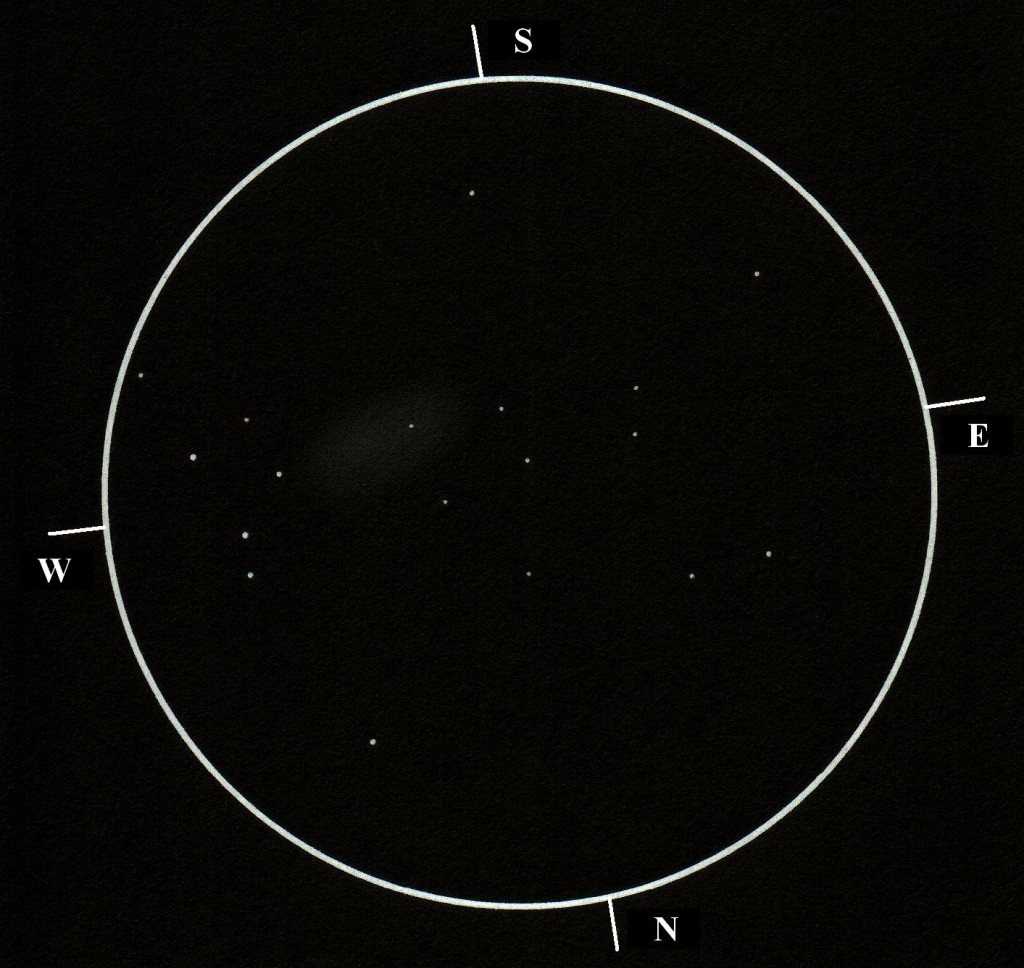
Object: UGC 12613 = Pegasus dwarf galaxy (GX, Peg)
Date: 17 October 2011.
UT.: 18h19m-18h40m
Equipment: 305/1525 Dobsonian telescope
Mag.: 122x
FOV: 25’
S = 7 / 10
T = 4 / 5
Observer: János Gábor Kernya
Location: Sükösd, Hungary

Scorpius
Hover mouse over image to view labels.
Object type: constellation
Location: Itajobi, SP, Brazil (on a farm)
21º19′ S
49º03′ W
+450m
Date: July 2011
Media: 2B 0.5mm graphite pencil on white paper, scanned then inverted
Instrument: naked eye and 10×50 binoculars
Observer: Rodrigo Pasiani Costa
July 2011 was definitely a great month for me to observe the night sky. In fact it didn’t rain at all, so I could set my telescope on my mom’s farm several times. I spent many hours a night observing, sometimes from seven pm (local time) untill half past trhee am (local time), and I would be alone if not for a mate: Scorpius, high above in the sky, always looking at me from the top, crossing from East to West through the zenit. So, between one object and another, I skethed this fascinating constellation together with some of its stellar clusters and nebulosity. The details were observed with a 10×50 binoculars, but the stars and the Milky Way were observed with the naked eye. I hope you enjoy it, it took me three or four nights, and was a great experience.
Oh, I could not forget. Past September 24th was the 18th birthday of my friend Camila. Happy birthday, Camila, enjoy the great dark sky you have from your garden.
More July sketches coming soon.
Dark skies to everybody.
From Brazil,
Rodrigo P. C.
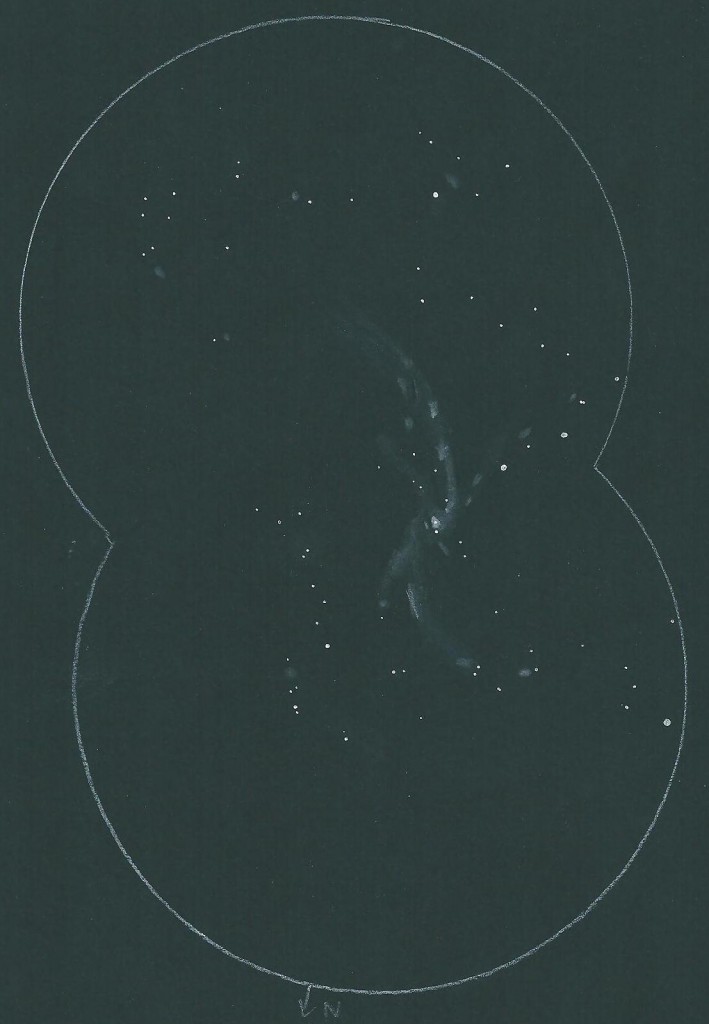
location : plateau d’emparis (Ecrin, France)
date : 01/10/2011
media : black paper, pastel, pensil
instrument : Newton 254mm
M33 is visible at the naked eye (Gegenshein too). In the dobson, I guess a lots of details, many HII region in 2 big spiral arms and the 3 other smaller.
It’s very wonderful, as in a spacecraft between the two galaxy.
The most important is the sky, and I think if the seeing was lower I could see more details.
seize the night
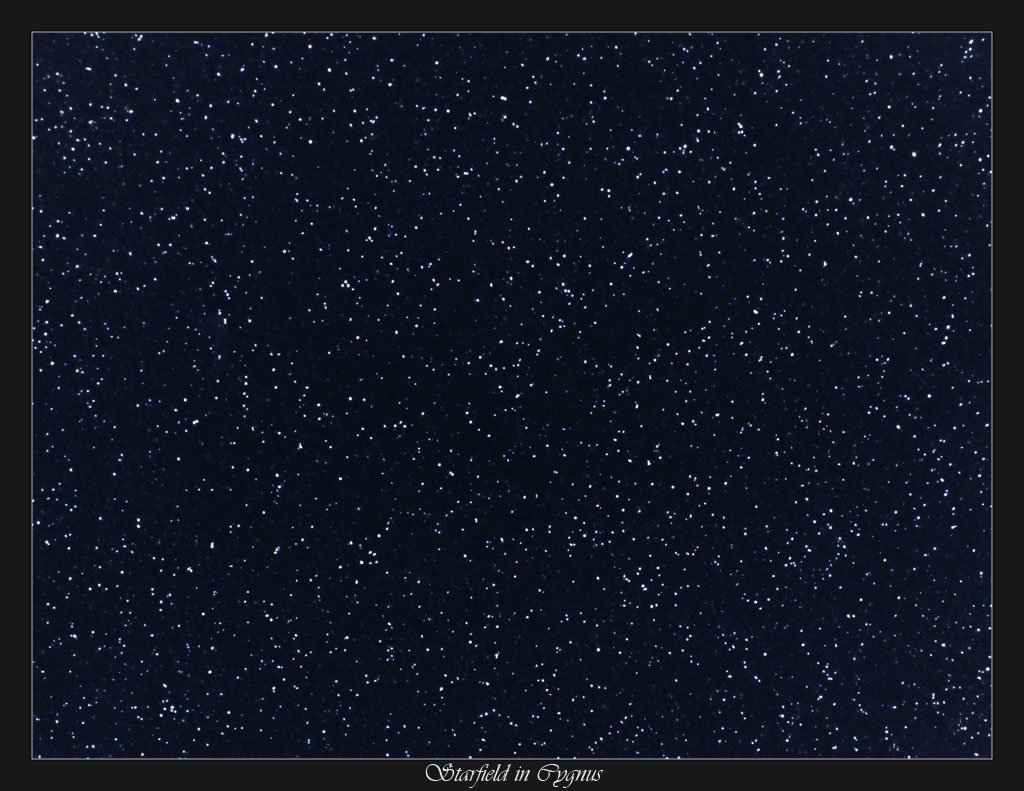

– Object Name: Milky Way
– Object Type: Starfield
– Location: Lith, the Netherlands
– Date: 25-7-2011
– Media: pencil sketch on white paper
The bright band of the Milky Way is beautiful visible in this time of the year. When you look high up in the sky, you’ll see the constellation of Cygnus. This constellation lies from our perspective in the Milky Way band.
So, when you aim your binocular or telescope to this region, you’ll see a countless amount of stars. Each star in this vast starfield is unique. Every single star tells his own story. They have planets that orbit around them, and on those planets may be live. Dreaming about the wonders that are out there is what makes astronomy so special.
Thanks for watching,
Rutger Teule
www.rutgerteule.com
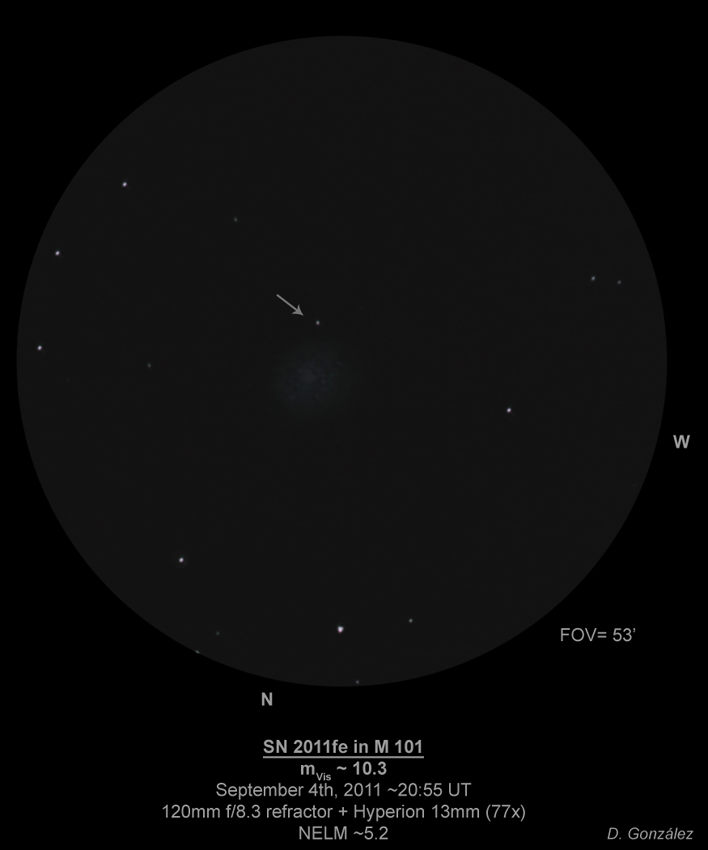
Here is a sketch of the unusually bright supernova that appeared last August 24th in the Pinwheel Galaxy (M 101) in Ursa Major. SN 2011fe is now at its maximum around magnitude 10 and it is very easy to see in my 120mm refractor, but it was also easy with an 80mm refractor (I estimated magnitude 10.3 on Sept. 4th and 10.0 on 6th). In contrast, as I am observing with moderate light pollution and M 101 is low, the galaxy itself is barely visible and I only can see the central region with effort. SN 2011fe is a nearby type Ia supernova and the brightest one since 1987. 2011 is being a great year for supernova observers!
Sketch: 2HB graphite pencil on white paper, scanned and processed with Photoshop CS3
Object Name: Supernova SN 2011fe in M 101
Object Type: Galaxy and supernova
Location: Asturias, Spain
Date: September 4th, 2011
Instrument: 120mm f/8,3 refractor + Hyperion 13mm (77x)
NELM: around 5.2, moderate light pollution
Regards,
Diego González
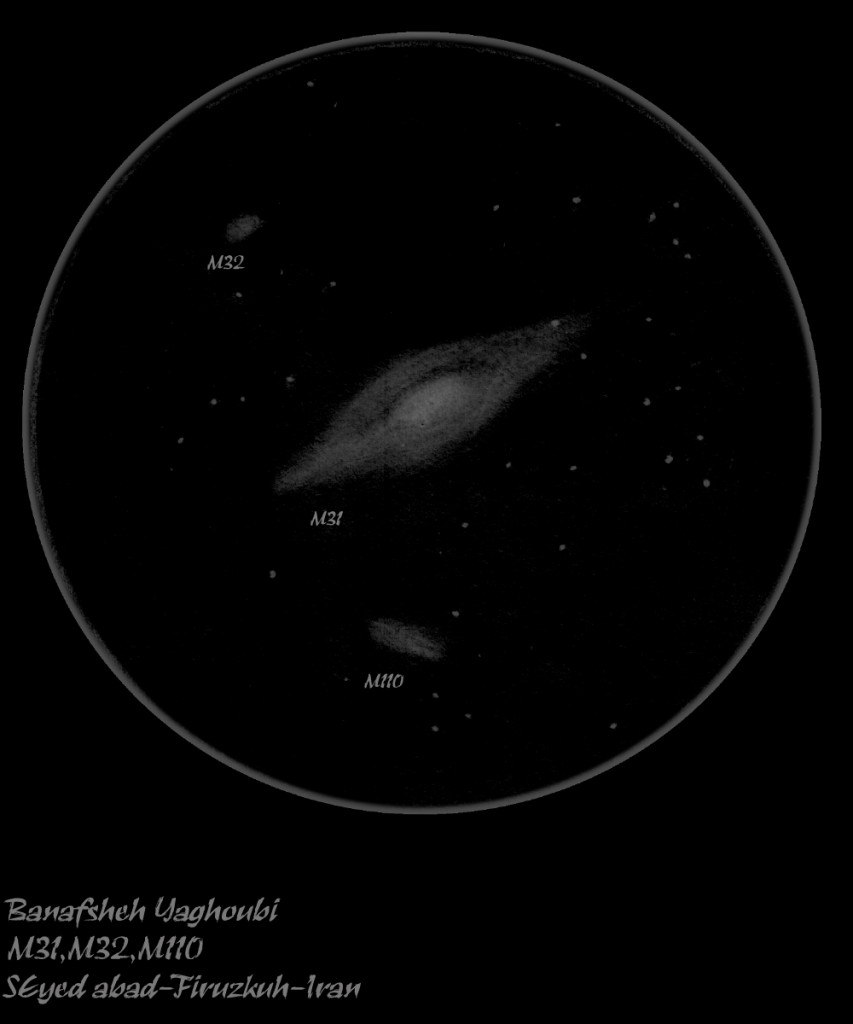
Objects name:
-Andromeda Galaxy(Messier 31/NGC224).
-Messier 32/NGC221,it is a satellite of Andromeda Galaxy.
-Messier110/NGC205,it is a Satellite of Andromeda galaxy.
Object type:
-M31: Spiral galaxy(SA(s)b).
-M32:Dwarf elliptical galaxy (cE2).
-M110:Dwarf elliptical galaxy(E5pec).
Location:Seyed abad-Firuzkuh-Iran(35º 38′ N , 52º 22′ E) .
Date:2011/07/01.
Time:2:30 local time (+3:30 GMT).
Media:Graphic pencil white paper-inverted in photoshop.
Equipment:200mm Dobsonian telescope-f/6-focal length 1200,Sky glow filter.
Eyepiece:30mm, Field:80º.
Conditions:Clear with some Light pollution.
The earliest recorded observation of the Andromeda Galaxy was in 964 CE by the Persian astronomer, Abd al-Rahman al-Sufi (Azophi), who described it as a “small cloud” in his Book of “Fixed Stars”. Other star charts of that period have it labeled as the Little Cloud.
Clear sky
Banafsheh Yaghoubi
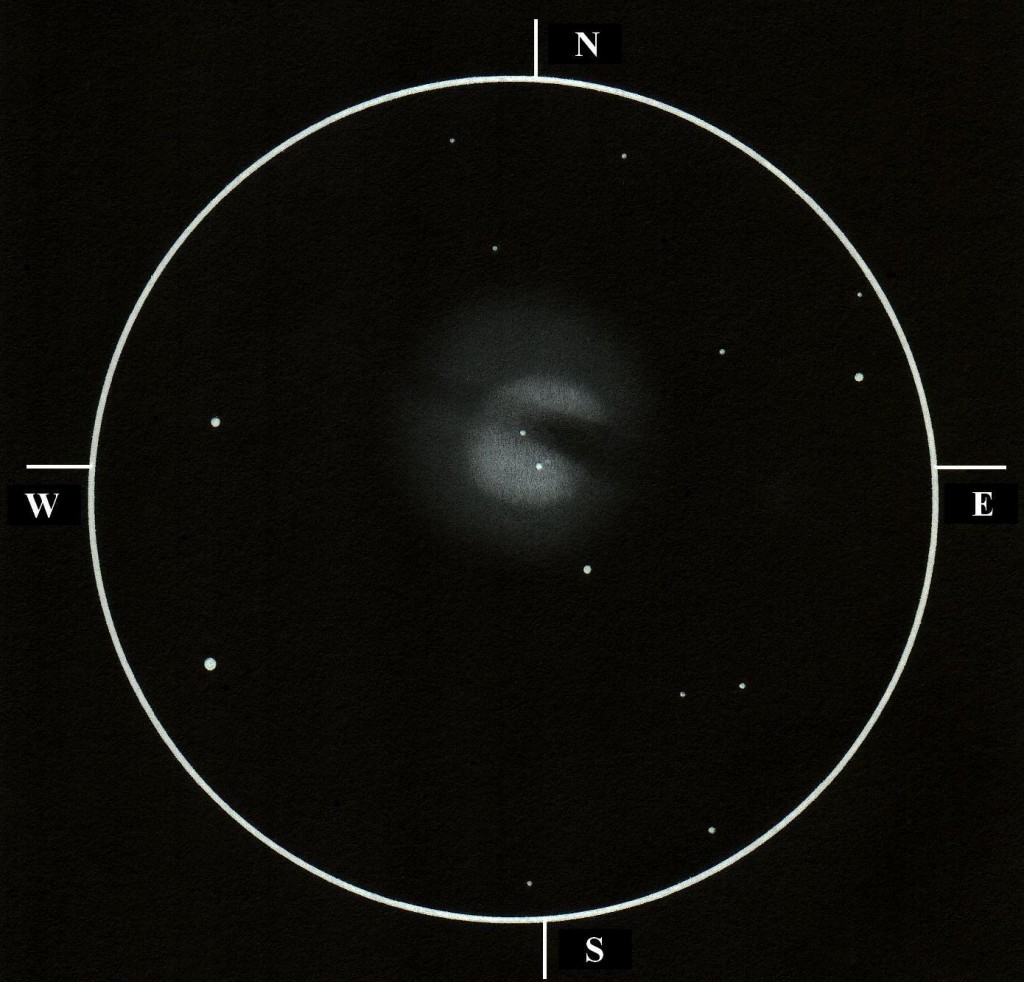
Object: NGC 5128 = Centaurus A (GX, Cen)
Date: 06./07. April 2010.
UT.: 00h04m-00h51m
Equipment: 105/600 RR achromatic refractor, star diagonal
Mag.: 75x
FOV: ~ 33’
S = 3 / 10
T = 5 / 5
Observer:
János Gábor Kernya
galaxisrajzok.blogspot.com
Location: Kalo Nero (Crete, Greece)
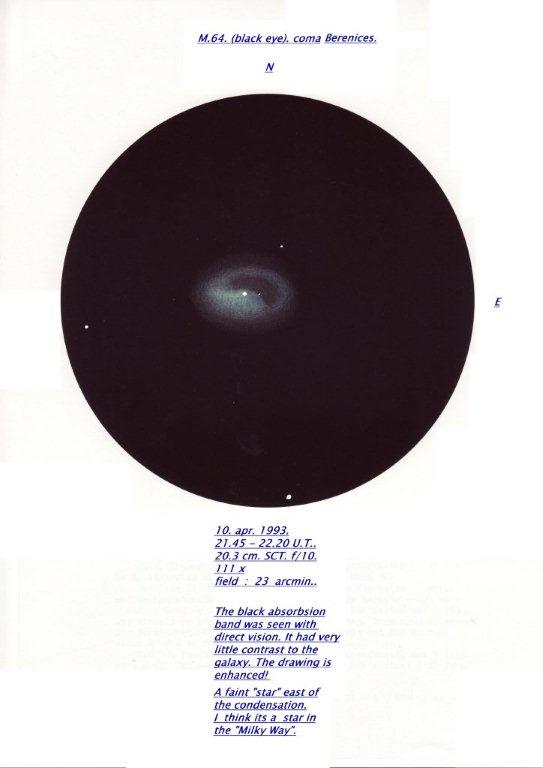
Hey Artists!
I send you M. 64 (Black eye).
It is a lens-shaped galaxy with a bright core. The dark band was seen, but the contrast was low.
A faint star was seen just east of the core, but I think its a star in our “Milky way”.
The outer part of the galaxy was diffuse and difficult to see an edge. Info on my sketch.
The sketch was made from Trondheim, Norway with crayons on black paper.
Best wishes from Per-Jonny Bremseth.
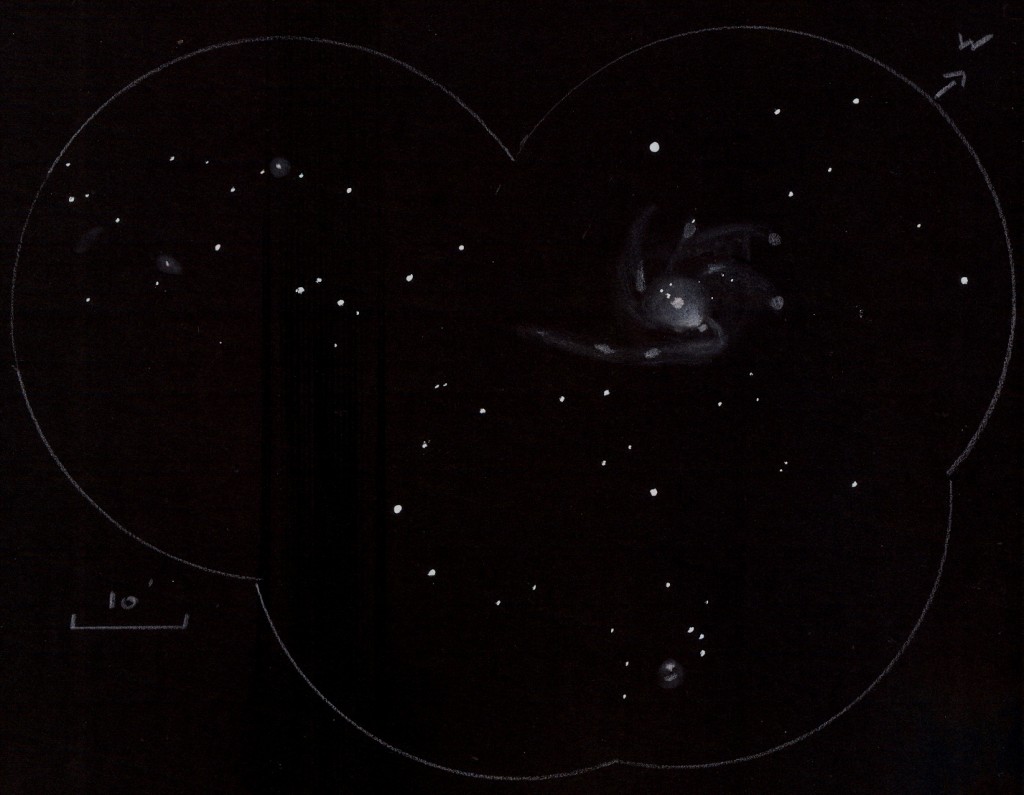
instrumentation : dobson 254/1200 +pano 24, nagler 13
Location : Maumusson, Loire-Atlantique, France
Date : 29/05/2011
Media : white pencil, black paper.
condition : no humidity, great transparency, a little light pollution, great seeing.
I have never seen M101 as beautiful as that. Many details are difficult. details on ngc 5474. 1h30 of observation.
Object : Supernova SN2011dh in Spiral Galaxy M51
Date : June 08, 2011
Time : 12:30-02:00 LST/ 07:30-09:00 UT
Location : Aguila, Arizona USA
Gear : Binoculars 25 x 100 and CPC1100 XLT with 25mm Plossl
Detector : Visual Sketch
Magnitude : 8.5 for M51 and 14.9 for SN2011dh(webtreatz.com)
Weather : Clear sky, no winds, low 70’s and quiet as a mouse!
Comments :
It’s interesting to ponder in awe, how a star that has turned into a supernova some 30 million light years distant is just NOW reaching our immediate universe, our light buckets our dilated pupils! This recently discovered supernova cataloged SN2011dh and found on May 31, 2011, might not last long. It’s believed to be diminishing in magnitude with a possible viewing window of some weeks or perhaps a couple of months. If you would like to get a glimpse of it, my suggestion is- don’t wait any longer!
With mounted binoculars it is quite easy to pick up M51 as it appears elongated and fuzzy. Some fidgetting of the eyeball around the circumference of the oculars and it’s companion NGC5195 emerges just as well. Both gravitationally interacting galaxies seem like puffs of smoke with their nucleus showing a hint of brightness.There are no noticeable spiral arms, no connecting bridge or other discernable features- not even the main attraction SN2011dh.
All this will change when I prepare the 11 inch SCT and aim it at the said subject with a 25mm Plossl. Yes, I had tried a 10mm and a 32mm but the 25mm gave me the best results. Peering down the eyepiece, Hazy blotches but distinct spiral structures are emanating from the soft glowing core of M51. Of the two major spiraling limbs, the one stretching all the way to NGC5195 or the one with the southeast orientation, will be the one sporting the newly discovered supernova. Four tiny specks of starlight ranging in magnitude from 13 -15 located on the southwest side of the Whirlpool and lined-up from East to West are clearly visible when using the cone receptors within the corners of your eyeballs. Averted vision here my friends, or you will miss the whole point. No pun intended! From recent photo submissions to various popular social websites, I made a mental note to see the whereabouts or location of SN2011dh. It’ll be nested on the spiral arm which embraces NGC5195 or the one facing the southeast coordinates.Much better seeing than explaining but after plotting their correct places among the broken segments of spiral arcs- one of the specks surely did fell where the photos had indicated it should be! I concluded my quest and my sketching for the night was done. Enjoy!
Dark and clear skies to all,
Juanchin 😀